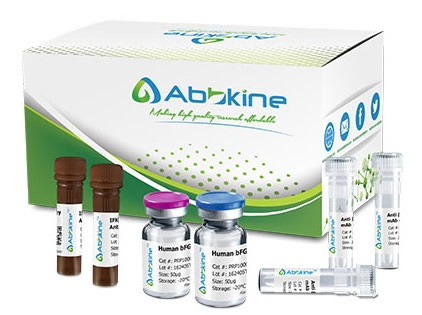By database mining, Peeters et al. (2003) identified a gene family related to p53-activated gene-26 (PA26), which they termed the sestrin family. Sequence alignment of human and mouse sestrin protein family members showed that the gene family is highly conserved. The SEST3 gene encodes a deduced 492-amino acid protein.Using FISH, Peeters et al. (2003) confirmed the localization of the human sestrin genes PA26, SEST2 , and SEST3 to chromosomes 6q21, 1p35.3, and 11q21, respectively. Using the same method, they mapped the mouse Pa26, Sest2, and Sest3 genes to syntenic regions on chromosomes 4, 9, and 10, respectively.
Human Sestrin-3 (SESN3) ELISA Kit employs a two-site sandwich ELISA to quantitate SESN3 in samples. An antibody specific for SESN3 has been pre-coated onto a microplate. Standards and samples are pipetted into the wells and anySESN3 present is bound by the immobilized antibody. After removing any unbound substances, a biotin-conjugated antibody specific for SESN3 is added to the wells. After washing, Streptavidin conjugated Horseradish Peroxidase (HRP) is added to the wells. Following a wash to remove any unbound avidin-enzyme reagent, a substrate solution is added to the wells and color develops in proportion to the amount of SESN3 bound in the initial step. The color development is stopped and the intensity of the color is measured.
Human Sestrin-3 (SESN3) ELISA Kit listed herein is for research use only and is not intended for use in human or clinical diagnosis. Suggested applications of our products are not recommendations to use our products in violation of any patent or as a license. We cannot be responsible for patent infringements or other violations that may occur with the use of this product.
Find more details at http://www.abbkine.com/product/human-sestrin-3-sesn3-elisa-kit-kte60685/
bio-equip.cn




